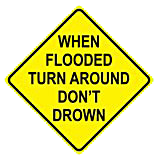Overview
The updrafts in thunderstorms can be extremely strong. The stronger the updraft, the more weight of rain and hail that can be supported. This experiment will show that cotton balls, like clouds, hold a tremendous amount of water. In nature, once the weight of the water is more than can be supported by the updraft, the water falls as rain. Using cotton balls, the students will learn of the large water capacity in clouds.
| TOTAL TIME | 10-15 minutes |
|---|---|
| SUPPLIES | Per pair of students: one cotton ball, one eyedropper, and one small cup of water. |
| PRINTED/AV MATERIAL | None |
| TEACHER PREPARATION | Put water in the cups before class. To minimize the risk of spills, fill the cups with only about ¾" of water. |
| SAFETY FOCUS | Flash Flood Safety |
Procedure
- Divide the students into pairs. Distribute one cotton ball, one eyedropper, and one cup of water to each pair.
- Have one student hold the cotton ball and one the eyedropper. For best results, the student with the cotton ball should hold it over the cup of water by pinching a small portion of the cotton ball between his/her thumb and index finger.
- Explain that the goal is to put as many drops of water into the cotton ball as possible. The cotton ball will be full (saturated) when water begins to drip from the bottom.
- Before they begin, ask for estimates of the number of drops they think it will take to saturate the cotton ball. Write their estimates on the board.
- Have the students count every drop and stop counting when water begins to drop from the bottom of the cotton ball. During the experiment, the students should not leave the eyedropper in one position over the cotton ball, but move it around to ensure as much of the cotton ball soaks up the water as possible.
- Record their results on the board.
Discussion
Typically, the original estimates will be low (10-30 drops). Often, the first estimate sets the general range that most of the remaining estimates will fall in. However, some students will throw out a "wild" answer (100, 150, etc.).
The results often surprise the students when they discover the cotton ball holds much more water than they thought. When done properly, using the smallest drops possible and completely saturating the cotton ball, more than 200 drops of water will be contained within the cotton ball.
Since the results can vary widely, ask the students which answer was the "correct" one. The correct answer, of course, is that ALL results are correct. Ask the students why the results vary. The three main reasons are:
- Drop sizes were different,
- Cotton balls are not exactly alike, and
- Some students did not move the eyedropper around to saturate the cotton ball.
This is what also occurs in nature. Drop sizes are different in thunderstorms based partly upon the strength of the updraft. Although the processes involved in making a thunderstorm are similar, no two clouds are exactly the same, and the amount of moisture in the clouds varies.
For example, thunderstorms occasionally develop over forest fires. While they may look like rain producers, the moisture is limited, and these clouds often produce little, if any, rain. More times than not, all they do is start more fires due to lightning.
When too much rain falls too quickly, flash flooding occurs. The National Weather Service will issue a Flash Flood Warning to alert you to the dangers of the rapidly rising waters.
Building a Weather-Ready Nation
When a flash flood warning is issued for your area or the moment you first realize that a flash flood is imminent, act quickly to save yourself. You may have only seconds.
- Get out of areas subject to flooding. This includes streams, dips, low spots, canyons, washes, etc.
- Whether driving or walking, any time you come to a flooded road or other area covered with water, TURN AROUND DON'T DROWN! Avoid already flooded and high velocity flow areas. You will not know the depth of the water or the condition of the ground under the water. This is especially true at night, when your vision is more limited. Play it smart, play it safe. Just 6 inches of fast-moving water can knock down a person and 12-24 inches can wash away a vehicle.
- If the vehicle stalls, abandon it immediately and seek higher ground. Rapidly rising water may engulf the vehicle and its occupants and sweep them away.


